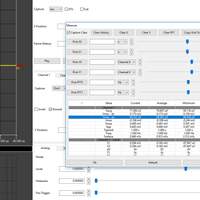Crowdfunding Orders Ship Soon!
We are happy to report that our packages have resurfaced after the holiday shipping delay we mentioned in our previous update. Crowdfunding orders should be on their way to backers within the next few weeks. If you need to update your shipping address, please do so through your Crowd Supply account settings. Read the full update.
Shipping Delay
All the ScopeFun units have been manufactured and sent out to Crowd Supply for fulfilment, but unfortunately our shipment is still in transit. The delivery is delayed, which could be due to increased parcel traffic during the holidays. Fulfillment logistics at Crowd Supply are all set, so orders will be sent out shortly after our shipment arrives. As soon as we receive an update, we will share it with you. Read the full update.
First Production Run
Bare boards have been delivered to Crowd Supply for fulfillment and will soon be sent out to the backers who ordered them. EMC testing was completed successfully, and the production of ScopeFun is now in full swing. Finally, aluminum enclosures have been manufactured, so we expect to deliver finished ScopeFun units to our backers on schedule, as soon as we complete testing and calibration. Read the full update.
Manufacturing Progress
The ScopeFun prototype is currently being evaluated by an independent EMC testing lab, which will verify that ScopeFun meets international EMC standards. Meanwhile, we have run into some issues sourcing one of our main components. Unfortunately, while our supplier was able to source this part, long lead times will delay board assembly by a few weeks. Delivery dates have been pushed back accordingly. Read the full update.
Documentation and our Final Week
Three days left! In this update we will provide information about where to find ScopeFun documentation and how to make use of it. Read the full update.
Digital GPIO & Comparison to Moku:Lab
ScopeFun provides 12 digital General Purpose Input/Output (GPIO) pins. These digital channels – which can serve either as inputs or as outputs – are useful for a wide range of applications. ScopeFun includes two instruments that make use of the GPIO: the logic analyzer and the digital pattern generator. For this update, we have created a short tutorial that demonstrates both applications. Read the full update.
Campaign Extended!
In consultation with Crowd Supply, we managed to reduce the minimum number of boards we can deliver while still covering the cost of production. Read the full update.
Taking Measurements Remotely
In this update we will look into the client-server architecture that makes it possible to control the ScopeFun hardware remotely and to access measurement data from a separate, Intenet connected device. Read the full update.
Turning ScopeFun into a Bode Analyzer Using the Python API
ScopeFun provides a Python API that you can use to create your own applications. It allows you to build upon and extend existing ScopeFun features without modifying the source code. To demonstrate it's use, we have created a Python script that turns ScopeFun into a Bode analyzer. Read the full update.
Hacking ScopeFun
Because ScopeFun is completely open source, users can modify it or add new features simply by editing the source code. To show how easy it is to customize ScopeFun, we have created a short tutorial in which we implement a filter inside the FPGA to average digital samples coming from the onboard AD converter. As we discussed in our previous update, this filter has the effect of reducing noise in the captured signal. Read the full update.
ScopeFun Noise Floor Measurements
Noise affects accuracy, especially when measuring low amplitude signals. Let's take a look at how ScopeFun performs in this regard. Read the full update.
Introducing the ScopeFun
ScopeFun in an open source, all-in-one instrumentation platform that includes an oscilloscope, an arbitrary waveform generator, a spectrum analyzer, a logic analyzer and a digital pattern generator. Our crowdfunding campaign is live! Read the full update.







